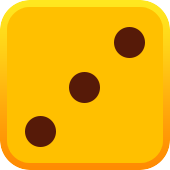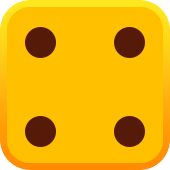












From smoky backrooms to livestreamed tournaments, the humble deck powers every deal, bet, and bluff. This guide shows exactly which deck to use, how ranks work, and why casinos obsess over security. You’ll learn design options, variant basics, and concrete setup tips for home tables and online poker cards. Whether you’re brand-new or seasoned, here’s a compact tour of poker cards that favors specifics over fluff. Expect clear tables, fast checklists, and answers you can apply right away.
Most poker uses a bridge-size or poker-size paper-coated or plastic deck with 52 cards, rounded corners, and a linen or smooth finish. Casinos rotate decks frequently to preserve integrity; home games can keep a deck for months if stored dry and flat. If you’re setting up a table, follow the rules of poker cards for shuffles, cuts, burns, and deal direction. For quick prep, use this checklist:
Also consider online poker cards for practice between live sessions.
A standard 52-deck contains four suits and thirteen ranks per suit, giving uniform probability across deals. This structure underpins betting math, draw odds, and balance across variants. When learning how to play poker cards for beginners, start with Texas Hold’em because its rules map neatly to the same pack used in other games. Use this table to verify completeness:
|
Component |
Count |
Notes |
|
Suits |
4 |
Hearts, Spades, Diamonds, Clubs |
|
Ranks per suit |
13 |
Ace, King, Queen, Jack, 10–2 |
|
Total cards |
52 |
No jokers by default |
|
Key points: |
Jokers are almost always removed in casino and tournament play because wild cards distort odds and strategy. Exceptions exist in some home variants like Joker poker or certain draw games, but they’re announced up front. If a joker appears in a mixed game, specify whether it’s fully wild or a bug (ace-or-to-complete-a-straight/flush). Otherwise, assume no jokers are in use.
Practically, hand the best set of cards in poker comparisons rely on ranks, not suits: a higher pair beats a lower pair; if pairs tie, compare the highest kicker, then the next, then the fifth card. Flushes are compared by sorting the five ranks from highest to lowest; suits never resolve a tie. Straights are valued by the top card—except the five-high wheel (A-2-3-4-5) where the Ace counts low—so a king-high straight beats a queen-high straight. For straight flushes (including a royal), all five cards must share a suit; if two appear, the one with the higher top card wins. Some groups use suits only for administrative tasks like drawing seats or picking the first dealer, but this never alters hand strength. Mastering these comparisons helps you read boards quickly, recognize counterfeit or kicker issues, and avoid costly miscalls.
Hearts and Diamonds are red; Spades and Clubs are black. Spades (♠) are pointed, Hearts (♥) are curved, Diamonds (♦) are angular, and Clubs (♣) are trefoils—these shapes make pips readable at a glance. Court cards—Jacks, Queens, and Kings—are the face cards in play that often act as key kickers or blockers. Suits matter collectively for flushes and straight flushes but rarely outrank one another in standard poker cards rules.
|
Suit |
Color |
Pip |
|
Hearts |
Red |
♥ |
|
Diamonds |
Red |
♦ |
|
Clubs |
Black |
♣ |
|
Spades |
Black |
♠ |
Ace is usually highest, followed by K, Q, J, 10 down to 2; in 5-high straights (A-2-3-4-5) the Ace plays low. Mastering card values helps you compare kickers and choose profitable folds. Understanding cards combination poker and the official hands ranking prevents disputes at the table. This awareness guides which cards to play poker when facing raises or draws.
|
Rank |
High Value |
|
Ace |
14 (or 1 in 5-high straights) |
|
King |
13 |
|
Queen |
12 |
|
Jack |
11 |
|
Ten |
10 |
|
Nine |
9 |
|
Eight |
8 |
|
Seven |
7 |
|
Six |
6 |
|
Five |
5 |
|
Four |
4 |
|
Three |
3 |
|
Two |
2 |
Add one more layer of poker cards hands ranking precision: pick mirrored (two-way) backs with a white border about 3–5 mm wide, which hides edge wear and reduces accidental “tells” from rotation. Favor crisp black and rich red inks on matte or light-gloss finishes so pips stay legible under LEDs, and insist on four corner indices for easy fanning whether you’re right- or left-handed. Avoid full-bleed dark backs and metallic inks—they scuff fast and can create unintended marked patterns. If your group has mixed lighting or color-vision differences, consider four-color faces (black/blue/green/red) for suits in home games, while keeping traditional two-color sets for formal play to match typical casino suit importance expectations. Before you play, make sure to read the terms on the bonus page so you know the wagering requirements.
Jumbo index cards have larger corner numerals and pips; regular index uses smaller corners with larger center artwork. Jumbo is ideal for bigger tables, seniors, or broadcast situations because values pop from distance. Regular index can look cleaner and fit more artwork, helpful on cramped tables. Quick cards to play in poker guide:
Plastic cards resist bending, liquids, and warping; they shuffle smoothly and last far longer than paper. Paper (plastic-coated) is cheaper and perfectly fine for casual nights, but it dings and marks sooner. To stay sharp enough to pick poker cards to win, retire any deck with chips, crimps, or stains. Rotate two decks to cut downtime and preserve feel.
The pack evolved from European adaptations of playing cards that arrived via trade routes centuries ago. Many regional designs existed, but the Anglo-American layout became dominant in casinos. Studying the history of poker cards explains why indices, backs, and sizes standardized in modern rooms. Today, even poker cards online mirror the same ranks and suits to keep learning transferable.
Fifty-two offers twelve face/non-face splits per suit and neat divisibility that supports probabilities players can compute at the table. It creates rich variance for straights and flushes without making full houses or quads too common. Other sizes exist historically, but 52 balanced complexity, manufacturing, and gameplay across trick-taking and betting games. That online poker cards balance is why tournaments and casinos still demand the same count.
Casinos defend the game with manufacturing controls, handling protocols, and surveillance. Decks arrive sealed and are logged, inspected, and destroyed on schedule. Many rooms use pre-shuffled packs for tournament starts and track tables with cameras and pit audits. Typical protections include:
|
Feature |
Purpose |
Example Use |
|
Unique cut/serial |
Inventory control |
Box labels logged per table |
|
UV/IR inks |
Covert verification |
Back/edge scanning |
|
Precise cut & finish |
Mark-resistance |
Harder to edge-sort |
|
Scheduled rotation |
Wear control |
Swap every few hours |




